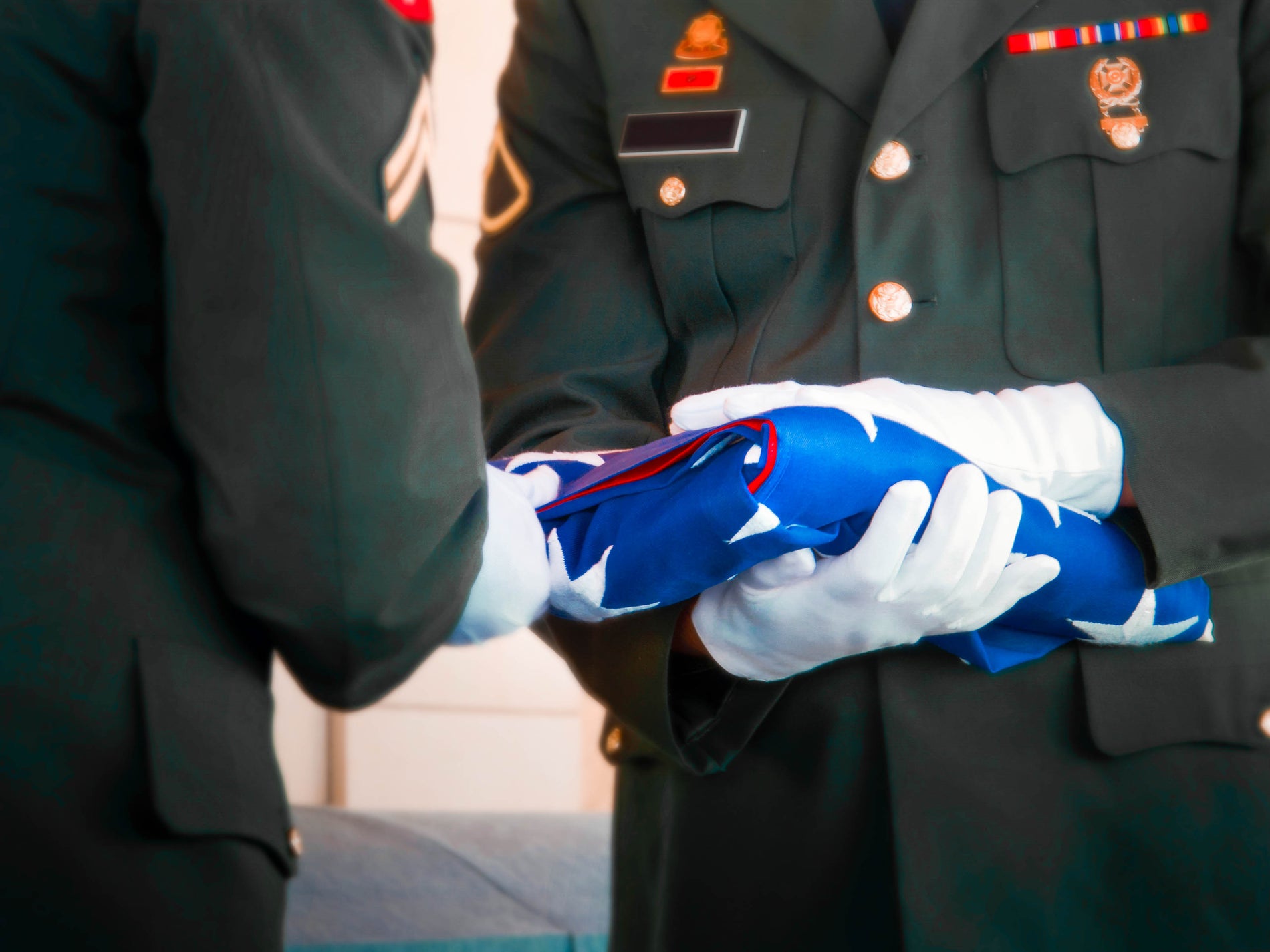
In Times of Mourning
If the flag is an indoor flag or mounted on the side of a house where it cannot be lowered to half-staff, it is appropriate to tie a black ribbon above the flag, just below the ornament. The black ribbon should be no more than 10% the width of the flag and approximately twice its length.
In some situations it is not possible to half-staff a flag -- for example, when it is permanently fixed to a staff. In that case displaying black ribbons above a full-staffed flag is an appropriate alternative form of mourning. The Flag Research Center in Winchester, Ma. recommends attaching a single black ribbon, the width of one flag stripe and with a length twice that of the flag. The center of the ribbon should be tied or otherwise affixed to the staff such that its two ends (each as long as the flag) fly freely.
(Copyright 2004 by the Flag Research Center; all rights reserved.)
Many have asked if the above guidelines apply to the private sector or residential flag flyers. While the flag code and presidential proclamation are intended for all federal buildings, US Embassies and U.S.military facilities worldwide, the spirit of such proclamations reflect a standard of protocol that is typically adhered to by the general public. There is no law that would prohibit a state, city, town, private sector or residential flag flyer from flying their flag at full staff. Historically, however, as a matter of tradition and good etiquette, non-federal U.S. flag flyers have typically followed the federal governments lead.
Some have asked what to do when there is a state flag or other flag below the US flag. It is recommended that all flags other than the U.S. flag be taken off the pole and that the U.S. flag be allowed to fly alone. While flying non-U.S. flags on adjacent poles in a multiple flagpole situation is common, the strictest interpretation of the flag code suggests that all adjacent flags (i.e. state, corporate, foreign, etc.) be removed while the U.S. flag remains alone at half staff.
The United States Flag can be used to express sadness at the death of an important person or group of people. This is when the flag is flown at half-mast or half-staff.
When raising the flag to half-staff, always raise it briskly to the top of the flagpole for a moment before lowering it. When taking it down for the night, raise it to the top of the flagpole again and lower it to the bottom. When the United States flag is flown at half-staff, state flags should be removed or flown at half-staff too.
The flag should be flown at half-staff when important government officials or state governors have died, or when mourning a national tragedy. Only the President and state governors can decide when and how long the flag should be flown at half-staff. The length of time for flying the flag at half-staff depends on the office of the person held:
· Thirty days after the death of a President or former President.
· Ten days after the death of the Vice President, the Chief Justice or a retired Chief Justice, or the Speaker of the House of Representatives.
· Until the burial of an Associate Justice of the Supreme Court, secretary of a military department, a former Vice President, or governor of a state, territory, or possession.
· On the day of and the day after the death of a member of Congress.
· On Memorial Day, the day set aside to honor all the people who have died while serving the United States. Originally called Armistice Day for the day the treaty that ended World War I was signed, the flag is flown at half-mast until noon, and then raised to full staff until sundown.
· The US Congress designated 11 September as "Patriot Day." This has been made Section 144 of Title 36, United States Code. In commemoration of Patriot Day, Public Law 107-89 calls on the president to issue a proclamation each year.
"All departments, agencies, and instrumentalities of the United States and interested organizations and individuals [are to] display the flag of the United States at half staff all day on Patriot Day ... [and] the people of the United States [are] to observe a moment of silence on Patriot Day." State and local governments as well as citizens are also urged to "observe Patriot Day with appropriate programs and activities."


